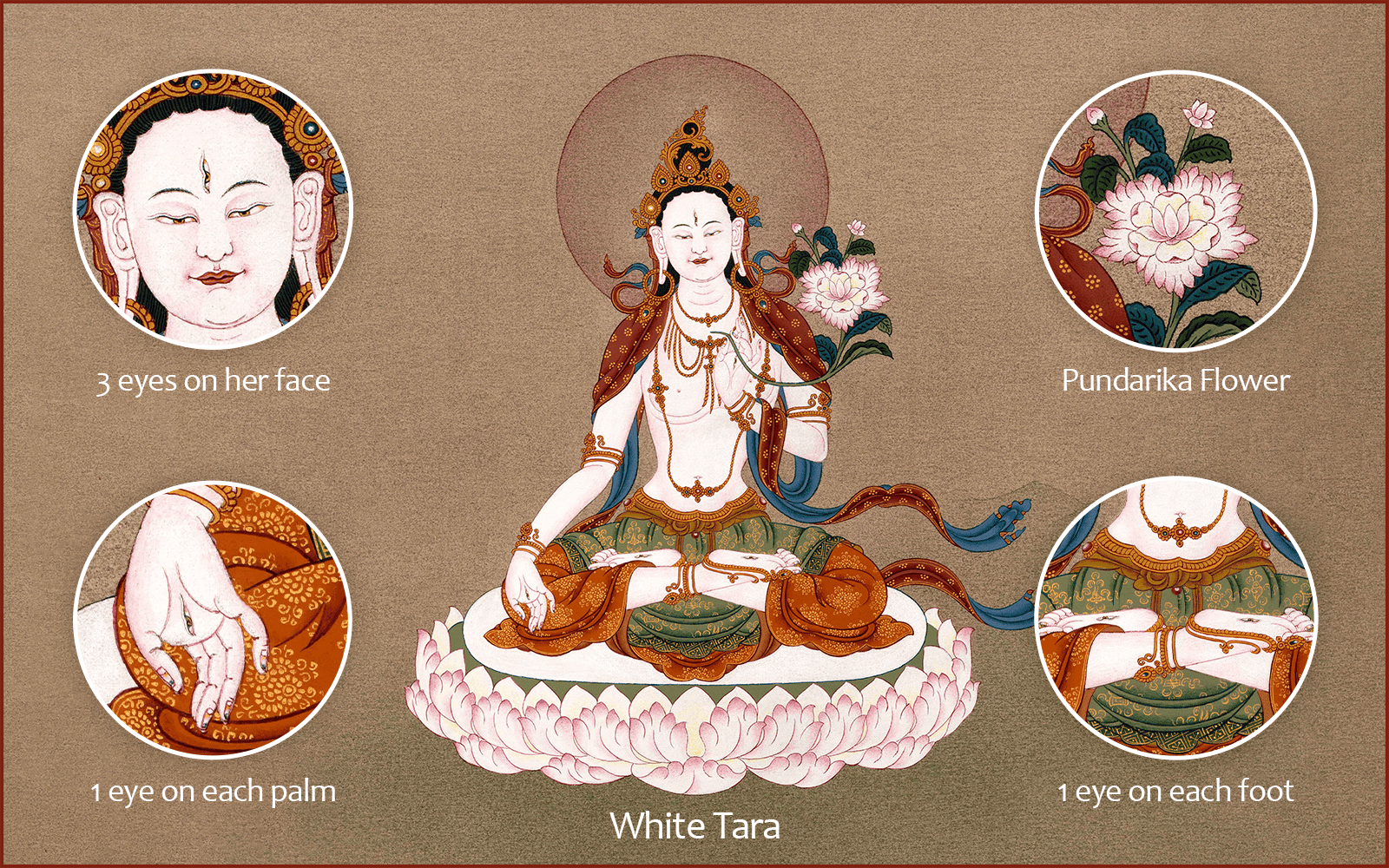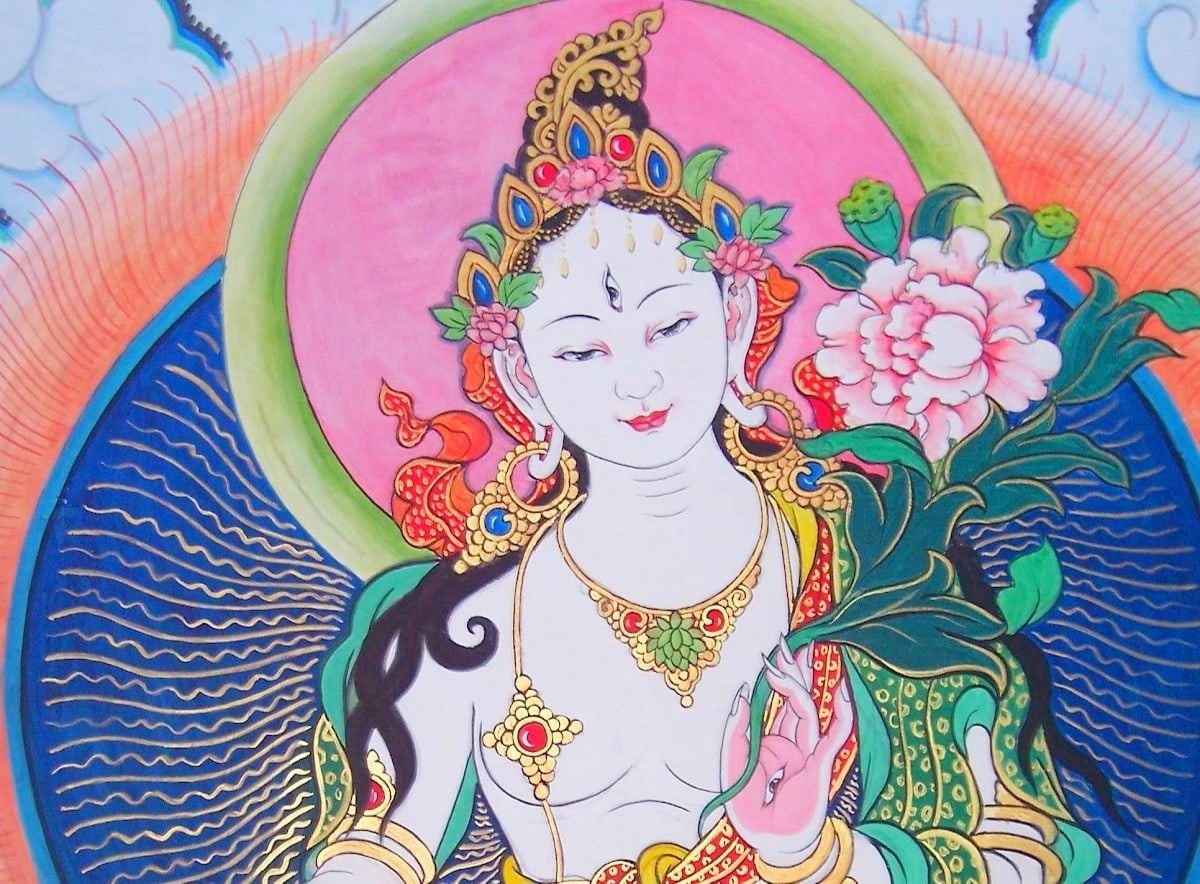What is mantra?
Some people associate mantras with magical phrases that grant wishes, while others view chanting them as a form of prayer or devotion. Nowadays, political parties and commercial brands often promote their “mantras” as catchy slogans, but this is not their original purpose in Buddhist practice.
In Buddhism, mantras serve as powerful tools to help us cultivate and maintain beneficial states of mind, such as compassion for others or clarity of thought. The Sanskrit term “mantra” combines the root “man,” meaning “mind,” with the suffix “-tra,” meaning “tool,” accurately describing their function as mental tools in Buddhism. Mantras are also present in various Indian spiritual traditions and beyond.
For example, Tibetans see mantras as a form of “mind-protection,” helping shield the mind from disruptive thoughts and emotions. Whether recited aloud or silently, during meditation or throughout daily life, mantras assist in calming the mind and fostering mindfulness of positive states.
In this context, mindfulness serves as a mental adhesive, anchoring our attention to the mantra and its associated mental state, preventing distraction or mental dullness.
Some mantras feature Sanskrit words mixed with syllables, while others consist solely of syllables. These components symbolize different aspects of Buddhist teachings, as seen in the mantra “om mani padme hum”:
- “Om” represents the body, speech, and mind achieved through enlightenment, as well as the ordinary aspects of ourselves that require purification.
- “Mani,” meaning “jewel,” signifies the compassionate method aspect necessary for purification. Compassion forms the foundation for our aspiration to attain enlightenment and benefit all beings.
- “Padme,” translating to “lotus,” represents wisdom, particularly the understanding of emptiness. Emptiness refers to the absence of impossible ways of existing, challenging our habitual projections of reality.
- “Hum” indicates the inseparability of method and wisdom, essential for achieving enlightenment and benefiting all beings.
Benefits of Mantra Meditation
Mantra practice in Buddhism offers a plethora of benefits. To begin with, it aids in regulating the breath and subtle energies, facilitating a calming effect on the mind.
Mantras serve as a tool to maintain focus on positive states of mind and emotions, such as love and compassion. Additionally, they play a crucial role in integrating and harmonizing our body, speech, and mind.
With deeper practice, mantras provide access to the subtlest levels of the mind, with a particular emphasis on understanding voidness or emptiness. This profound understanding can lead to the actual attainment of enlightenment, benefiting not only oneself but all sentient beings.
White Tara Guided Mantra Meditation Practice

Photo Credit: enlightenmentthangka.com
White Tara is a beloved deity in Tibetan Buddhism known for her compassionate and healing qualities. This guided meditation will lead you through a practice dedicated to White Tara, helping you cultivate inner peace, healing, and compassion.
Preparation:
- Find a quiet and comfortable space where you can sit or lie down without distractions.
- Take a few deep breaths, inhaling through your nose and exhaling through your mouth, allowing yourself to relax with each breath.
- Set your intention for the practice, whether it’s seeking healing, cultivating compassion, or simply finding inner peace.
Connecting with White Tara:
- Close your eyes and visualize a radiant white light surrounding you, symbolizing the presence of White Tara’s compassion and healing energy.
- Imagine White Tara herself, sitting gracefully on a lotus throne, her body radiating pure white light and emanating a sense of serenity and compassion.
Invoking White Tara’s Blessings:
- Silently or aloud, recite the mantra associated with White Tara: “Om Tare Tuttare Ture Mama Ayuh Punya Jnana Pustim Kuru Svaha.” This mantra invokes White Tara’s blessings for long life, wisdom, and healing.
- As you chant the mantra, visualize White Tara bestowing her blessings upon you, filling you with vitality, wisdom, and compassion.
Healing Visualization:
- Visualize White Tara’s healing energy entering your body with each breath you take. Imagine this energy as a pure white light, flowing through every cell and fiber of your being, soothing and healing any physical or emotional ailments.
- Allow yourself to bask in this healing energy, feeling it permeate every part of your body and mind, washing away any tension, pain, or negativity.
Cultivating Compassion:
- Shift your focus to the world around you and visualize beams of white light radiating from your heart center, reaching out to all sentient beings.
- With each exhale, send thoughts of love, compassion, and healing to all beings, wishing for their well-being and happiness.
- Recognize the interconnectedness of all beings and the power of compassion to bring healing and transformation to the world.
Gratitude and Dedication:
- Take a moment to express gratitude to White Tara for her presence and blessings during this practice.
- Dedicate the merit of your practice to the well-being and happiness of all sentient beings, wishing that they may be free from suffering and find lasting peace and happiness.
Benefits of White Tara Practice:
- White Tara meditation can promote physical healing by reducing stress, calming the mind, and enhancing overall well-being.
- It cultivates compassion and empathy, helping us develop a deeper sense of connection with others and the world around us.
- Regular practice of White Tara meditation can increase inner peace, resilience, and mental clarity, allowing us to navigate life’s challenges with grace and equanimity.
- By invoking White Tara’s blessings, we tap into a source of divine wisdom and compassion, guiding us on the path toward enlightenment and liberation from suffering.
Closing:
- When you’re ready, gently open your eyes and take a few moments to reflect on your experience.
- Carry the sense of peace, healing, and compassion you’ve cultivated during this practice with you as you go about your day, knowing that White Tara’s blessings are always available to support and guide you.
White Tara is extremely powerful. Tara is very close to sentient beings, like a mother to her children. She is very quick to fulfill our wishes and to grant us happiness and a long life, as well as to help us develop wisdom. By taking refuge in Tara and practicing meditation, visualizations, and having faith, you have the power to remove obstacles to your life and to prolong your life.
Tara is closely related to Chenrezig (Avalokitesvara), the Bodhisattva of Compassion. White Tara has 7 eyes — with an eye in her forehead, and one on each hand and foot — symbolizing her compassionate vigilance to see all the suffering of the world.
For Tibetans, the two practices that everybody engages in, whether within or outside the monastery, are Tara—specifically the praises to Tara—and Chenrezig. The mani-mantra and the praises to Tara are known by heart to all. Everyone chants them; even when riding buses, navigating dangerous corners with steep ravines, people recite praises to Tara to overcome fear and obstacles. It’s one of the most common practices found everywhere.
Mother Tara sincerely and with strong faith will protect us from all obstacles and fulfill all our wishes. As a wisdom Buddha and a manifestation of the completely purified wind element, Tara can help us very quickly.



